Is it playable?
Training our eyes to see like a child, and some of our favorite thrift shop finds.
Last week, we shared our Smart List of basic art supplies we use to cultivate creativity in any context. What works about that specific list of suggested supplies? They’re convenient for both the users and the facilitators. There’s nothing precious really about any of them, so they can be put to work again and again and replenished fairly easily. They’re also quite compatible (a word we’ll use a lot to describe materials that work well together without instruction or prescriptive process). A child can make a drawing with colored pencils or Sharpies and add a layer of watercolor on top. They can try the watercolor on the index cards, cardboard pieces, and copy paper. The gluesticks will work with all of the lighter materials, and the tape and wire will help attach the heavier-duty ones, like packaging or egg cartons. Budget-friendly and counter to the pervasive single-use disposability of our culture, use what you have is a motto that drives our decision-making when it comes to setting up environments and experiences that promote agency, creativity, and flow.
Our favorite play materials are similarly hardworking and most often collected and sourced secondhand. We could list endless options, but it’s really all about how you see the materials that you encounter in your world and learning to present them to children with an open and flexible mindset. For example, Shannon spotted a Boon Grass bottle drying rack in a neighbor's giveaway pile. While she didn’t have an idea at first, she knew it could be used somehow in play. It became one of the most popular surfaces for animal play, construction, loose parts display, stacking, and so much more.

We employ our favorite motto, use what you have, when it comes to sourcing play materials, but also the phrase anything can be anything, first shared by our friend Lisa Zaretsky of Play Again Studio. Take use what you have, anything can be anything, and one more key question, asked by a first grader once during a classroom meeting, is it playable?, and you’ll begin to see opportunities for play everywhere. See a stick, a whisk, or a stapler as a child would, and ask, “Is it playable?” The answer will almost always be YES.
As yard sale season begins in our part of the world, we’ve always got a back-pocket list of favorite materials and loose parts that are easy to source secondhand. Sometimes, we can even find these for free with a little digging around or asking in our community. Let’s take a look at some materials you might already have (or can easily find at the thrift store or a yard sale). Here are some ways we’ve used them to spark prolonged, deep flow play when paired with other simple, readily available materials.
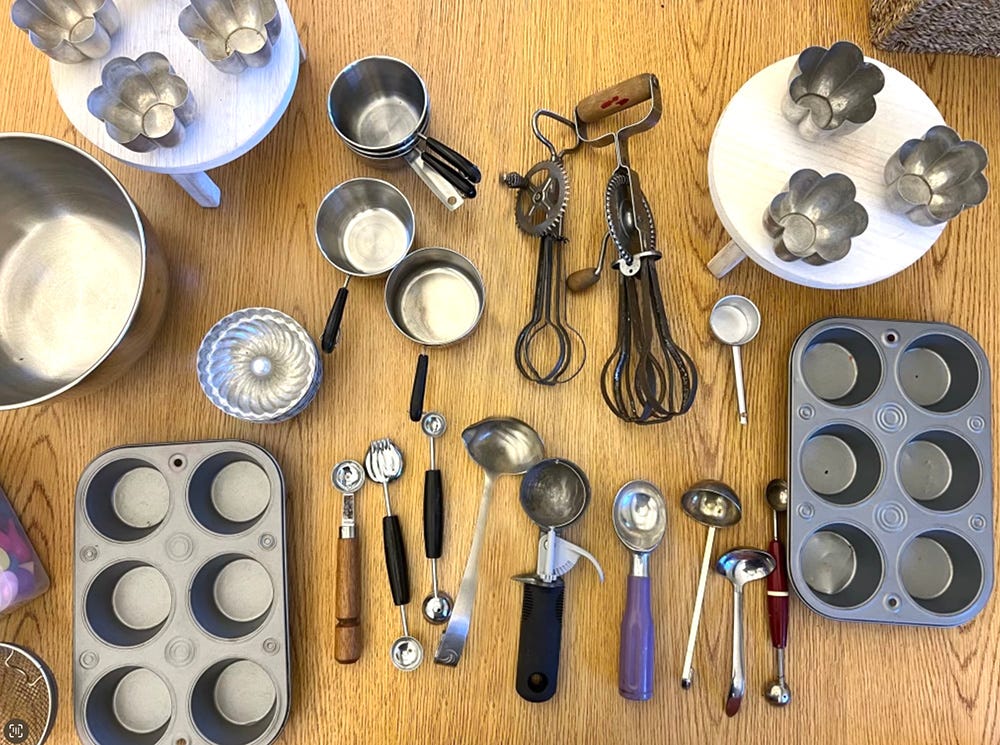
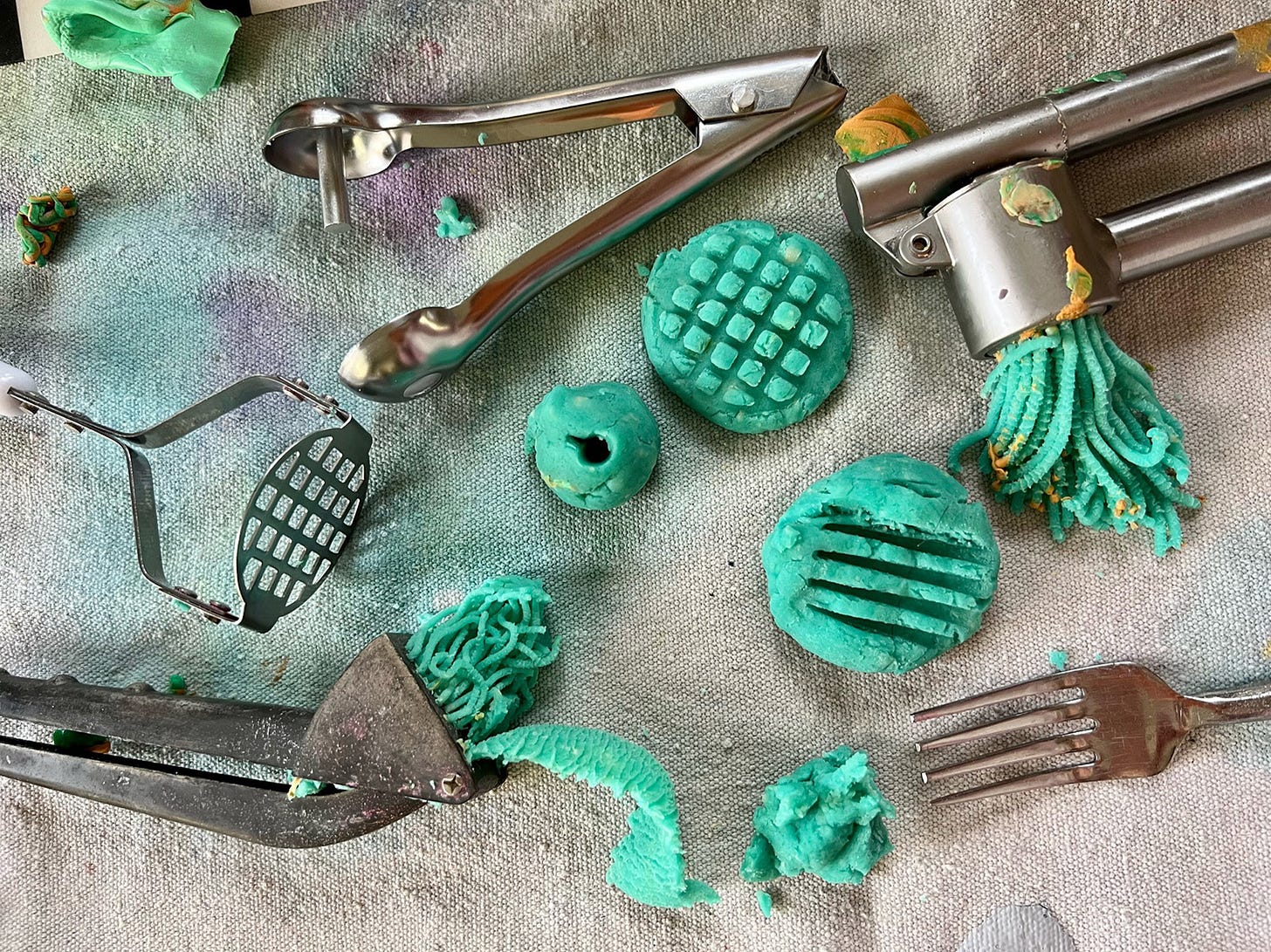
Kitchen utensils
An ice cream scoop with a little lever is truly one of the most popular sensory play tools we have in our collection. You’ll actually want to have a few of these in a classroom or studio space. Luckily, they’re easy to find at a thrift store. Make sure it’s got this mechanism for scooping out perfect lumps of kinetic sand or playdough. Any kitchen tool with a lever, crank, or any moving part (think salad spinner, hand-crank egg beater, mechanical sieve) is guaranteed to be a hit. Trust us on this one.
If you’ve been following us on other platforms, you know a garlic press is an absolute must for working with playdough or plasticine clay. It is so delightful to use, and of course, it's an excellent hand muscle workout. Look for other kitchen tools like egg slicers or potato mashers that can transform clay by pressing and pushing.
A colander can do so many things and is another crowd pleaser with dry sand in a large tub. In fact, we love any vessel with some holes so that the experience is less dumping and more meditative pouring and drizzling. You can also offer this colander upside-down with a collection of pipe cleaners or wire and any other threadable loose parts for a twisting, poking, threading experience.
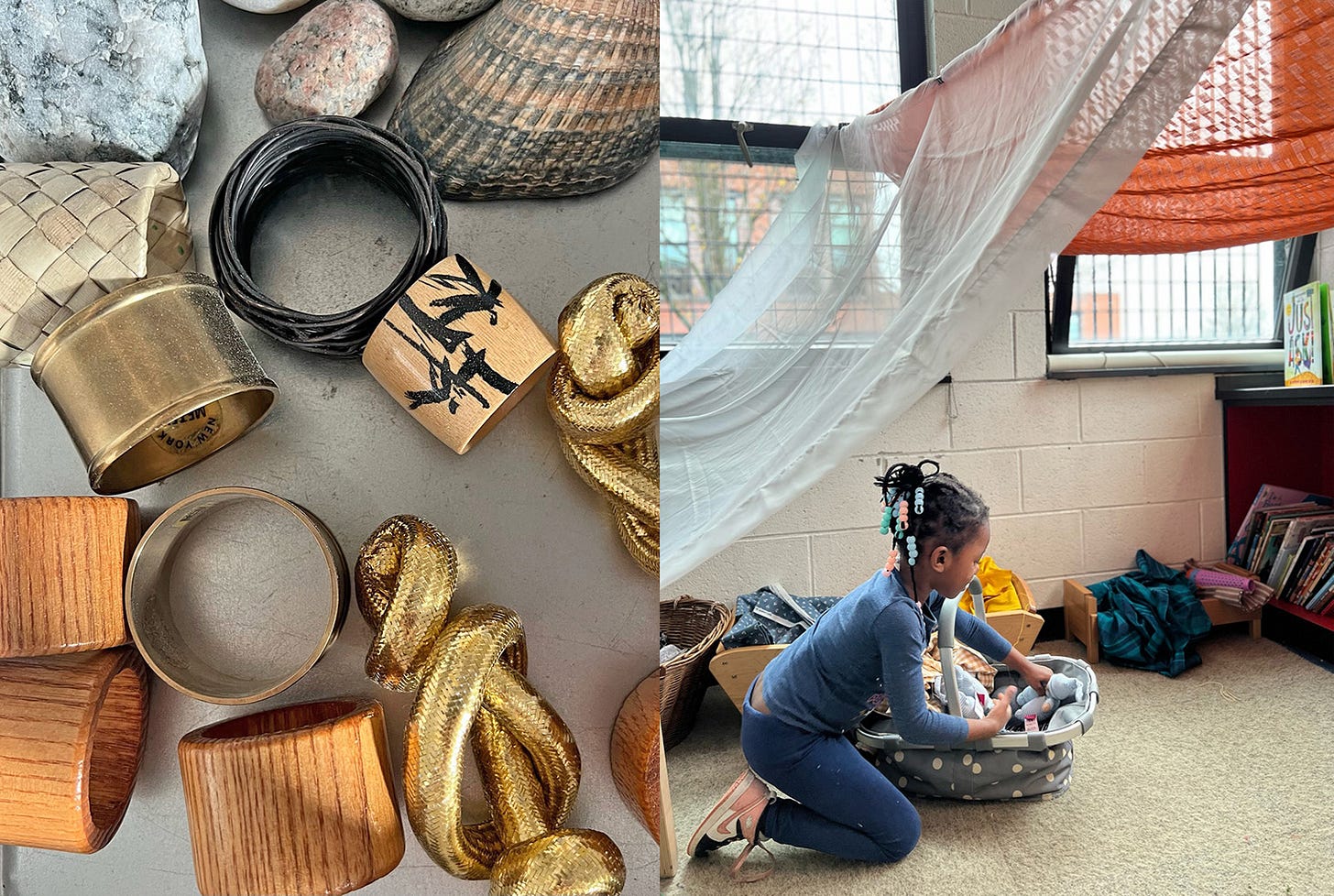
Everyday objects and unusual finds
Napkin rings are surprisingly easy to come across and stand in for play food in our dramatic play space and kitchen area. They are also a toddler favorite for stacking, sorting, putting things inside and taking them out, threading onto thick ribbon or a countertop paper towel holder. We look for sturdy sets of wooden or metal ones.
We are always on the lookout for fabric scraps. Think washed and cut-up t-shirts, clothing from the thrift store or your own donation pile, sheets, translucent scarves, tablecloths, dropcloths, or yardage from garage sales or creative use shops. We store smaller pieces in a basket to fold into all kinds of play. They come in handy for bundling a baby doll, setting a table in the play kitchen area, gathering loose parts to bring to another area of the room, adding dimension to a block structure, creating a cozy nook, and so much more.
Look for items that come in multiples. For example, a school library was getting rid of these fantastic metal bookends. When set up near the train tracks or Magnatiles, they folded right into the construction play. One child discovered that they could be stacked on their own. Plastic or wooden spools can also be stacked and make an excellent building material.
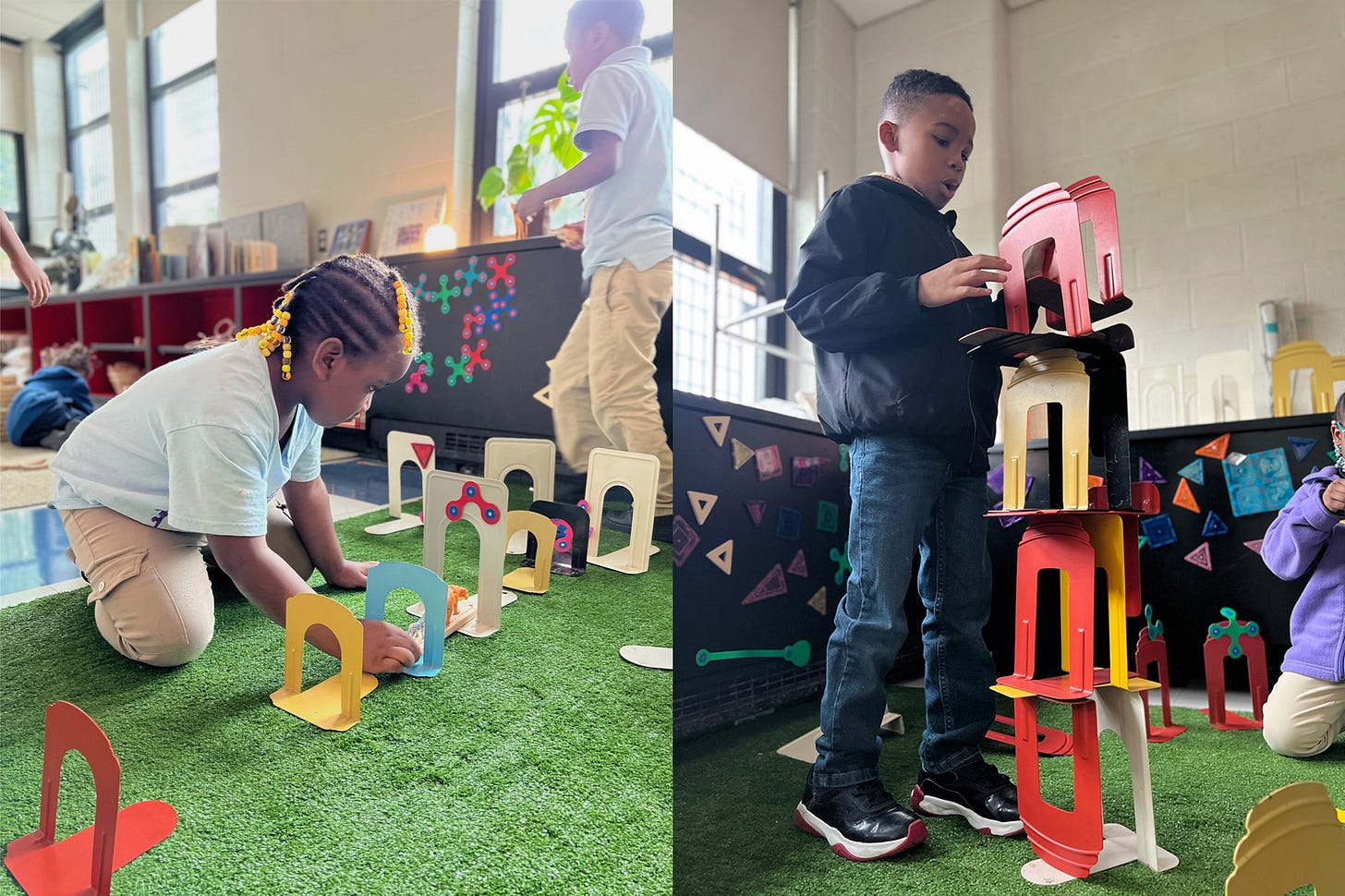
So today, tomorrow, or the next time you encounter an object, ask yourself, Is it playable? Ask a child, too. Their capacity for generating dozens of innovative, unheard-of ideas for play will surprise you every time.
Find a Creative Reuse near you, even if it’s a drive.
There are many ways to fill your classroom or home with art and play materials that cost either nothing or very little. We really try to buy secondhand or ask for donations for almost everything but the essential art tools. If you are new to seeing like a child and collecting unusual and repurposed materials for play, we want to share our favorite places to explore and discover.
Thrift shops are filled with a treasure trove of kitchen tools, baskets, trays, and unusual objects for play. Stick with Salvation Army or not-for-profit thrift shops for the lowest prices and to support good causes.
Yard Sales can be hit or miss, but it’s best to go with a list of what you are looking for. It’s so fun to find a unique material, but it’s no fun to collect too much and not have room for everything.
Creative Reuse centers can be the most exciting place for teachers. Some are better than others. The really good ones have such incredible, unique finds. Look for loose parts or art materials that are in abundance. Use this list to find one in your state (for the USA). Some states only have one creative reuse center, while other states have 10 or more. New York City’s Materials for the Arts provides a warehouse of materials that are completely free if you teach or are an artist in NYC. Pretty awesome.
Swap shops provide materials that are completely free. Search online for one in your local area. Bar’s town has one at the local dump. On her last trip, she found old frames to use in transient loose parts creations, and a canvas basket with handles, perfect to store rolled-up fabric pieces or other soft loose parts.
Buy Nothing pages on Facebook are very useful. Just search “Buy Nothing” and you can join one in a town near you. It does mean driving to pick up, and knowing what you are looking for, but sometimes that’s exactly what we need – a search tool to find something specific that we can pick up.
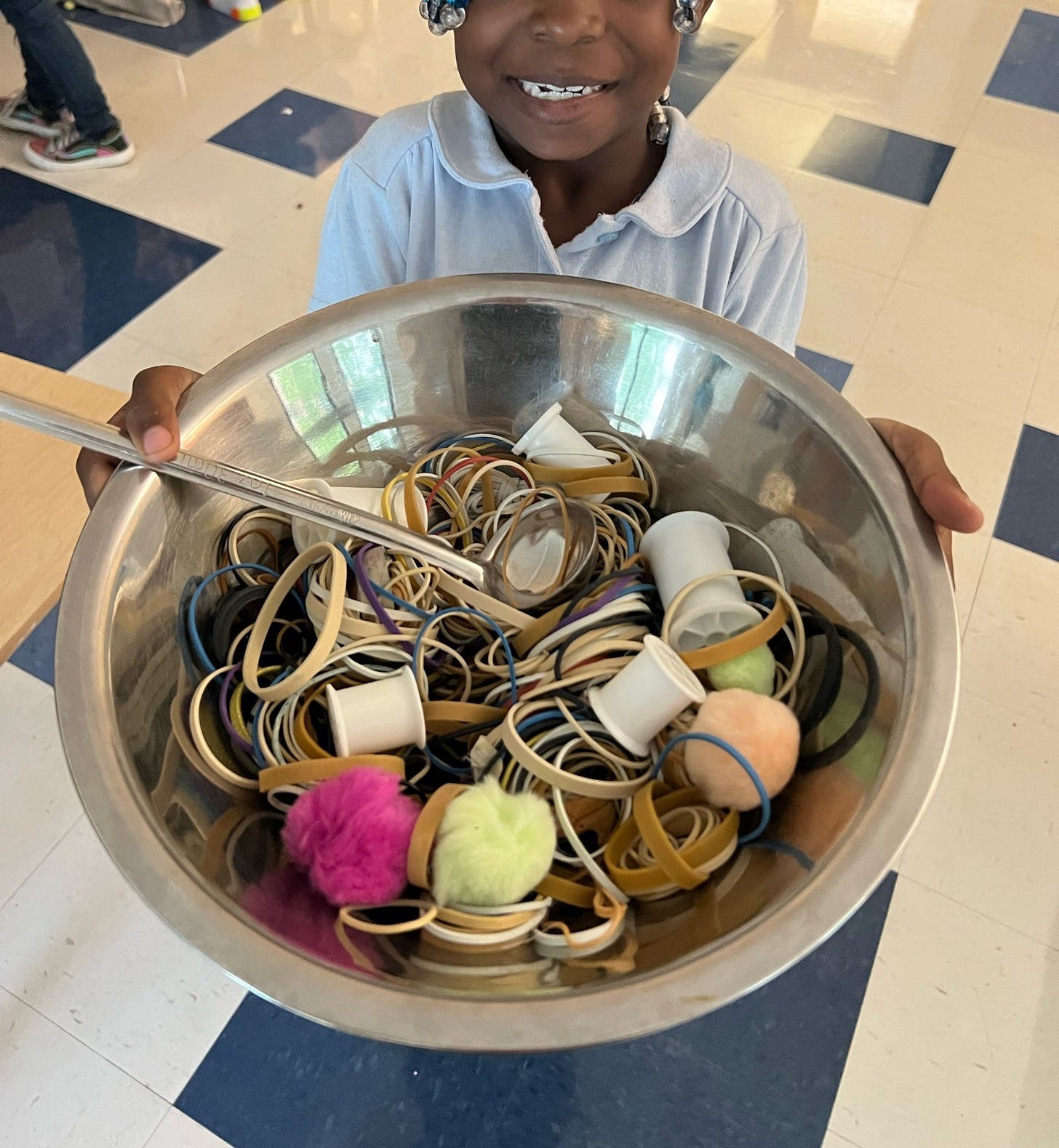
Tell us how you find free or repurposed things where you live around the globe. We would love to learn.

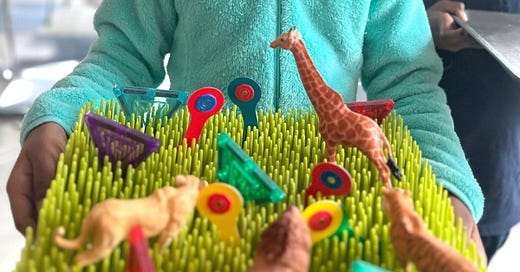


Our found items often come from our community! We are teachers living in Thailand. This means families move in and out often. Instead of getting rid of items or buying brand new ones, we just share!
I’d like to recommend the last day of estate sales for a good day to get kitchen or handyman tools really inexpensively. They usually discount everything the last day. I get lots of tools and art implements this way.